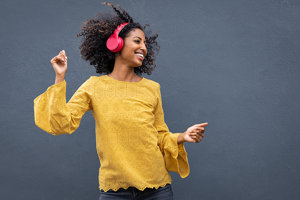 The idea of wearing headphones that are attached to whatever you’re listening to via wires will seem as ancient as listening to music courtesy of a record player to some people. The advancement of the likes of bluetooth is such that you simply don’t need to have wires linking you to your listening devices any more and to do so feels remarkably old fashioned. The idea that having wireless headphones means a loss in audio quality is also something that has been put to bed in recent years, with wireless headphones being just as impressive to listen via as wired ones.
The idea of wearing headphones that are attached to whatever you’re listening to via wires will seem as ancient as listening to music courtesy of a record player to some people. The advancement of the likes of bluetooth is such that you simply don’t need to have wires linking you to your listening devices any more and to do so feels remarkably old fashioned. The idea that having wireless headphones means a loss in audio quality is also something that has been put to bed in recent years, with wireless headphones being just as impressive to listen via as wired ones.
There is also the fact that you can have all different types of wireless headphones that needs to be taken into account. Headphones can be on-ear or over-ear, but there’s also in-ear buds that can supply you with your musical needs whilst being much more discreet. These are often favoured by commuters, dog walkers or joggers; those that might need to limit the extent to which their headphones can be spotted by others for some reason or another. Regardless of the type you opt for, knowing which ones are the best for you can be key.
See Also: Power Bank Chargers | Wireless Chargers
Shops With Wireless Headphone Offers
Wireless Headphones & Ear Buds Buying Guide
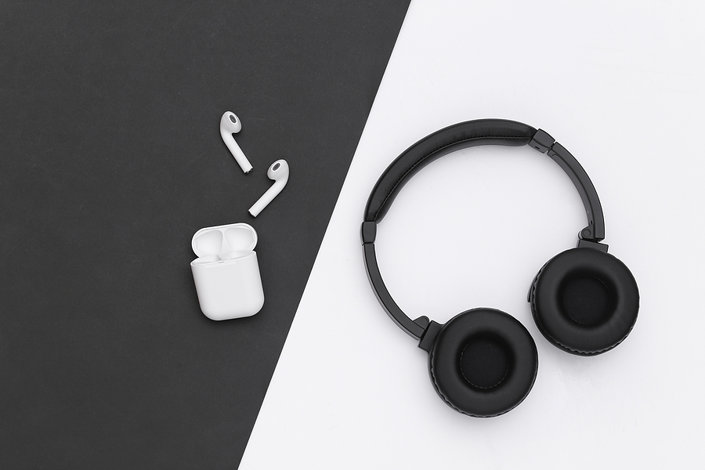
In one sense, figuring out which wireless headphones are the right ones for you is easy enough. Do you want big ones that cover your ears, for example, or smaller ones that go on your ears but are still relatively bulky? Are you someone that wants to be much more discreet with your wireless earphone wearing and therefore opt for smaller, in-ear buds? Those questions alone will help you to narrow down your options, but there are other considerations aside that will also aid you in reducing the sheer number of choices out there.
Over the past few years, there have been incredible advancements in the technology used in wireless headphones to mean that the audio fidelity provided by them is as good as any of the wired headphones you could buy. As a result, that is one of the things that you’ll be less worried about when coming up with your shortlist of possible wireless headphones that you might want to buy this Black Friday. Instead, you can think about things such as the features that the might have and whether you’ll make much use of them.
What Sort of Headphones Do You Want?
The only place to start when it comes to thinking about wireless headphones is to figure out which ones you want. There are typically three main types of wireless headphones:
- Over-Ear
- On-Ear
- In-Ear
In simplistic terms, over-ear headphones are the big and bulky ones that look like the sort of headphones that you’d imagine a DJ or record producer might wear. It is probably fair to say that if audio fidelity is really important to you then over-ear headphones are going to be the ones that you’ll want to opt for. They are best place to accurately reproduce the tones and sounds that the original maker of the music that you’re listening to will have intended when they recorded it. They have large drivers and decent speakers, making them much better at handling bass sounds.
On-ear headphones, as you might expect from the name of them, tend to literally sit on top of your ears. They will often allow for collapsable or rotatable hinges that make it easier to store them and travel with them, but they are still relatively big and noticeable when you’re wearing them. They do have the over-ear headphones’ ability to reproduce sound really well, but tend to be at least slightly smaller than their larger cousins. In other words, you get most of the benefits of over-ear headphones with fewer drawbacks in terms of size.
Last but not least are in-ear headphones. Sometimes called earbuds or In-Ear Monitors (IEMs), they are the sort of thing that you used to get for free when you bought a new phone or MP3 player or what have you. These are, as you might imagine, the easiest to transport and by far the most discreet of all of the options. The problem is that what you sacrifice in terms of quality can mean that they’re not the right option for you if you consider yourself to be a bit of an audiophile. These are mainly for podcast listeners or those that don’t care about audio quality.
What Do You Want From Your Headphones?
Knowing which type of headphones are available is all well and good, but what does it actually tell us? You might like the idea of on-ear headphones, for example, but if they don’t tend to have the sort of features that you like and need from your cans then it would be entirely pointless to buy some. Given how difficult it is to buy new headphones, largely thanks to how many different brands there are and the hundreds of models that these brands produce between them, narrowing down your options can be really helpful.
For those of you that just want decent sound and that’s it, you’re incredibly lucky as it means that your headphone buying journey will be an awful lot better than that of others. There are all sorts of different things that your headphones can do in addition to just putting sound into your ears, however, and it is worth considering the main factors in case this is something that might sway you one way or an another. Here’s a look at the most obvious features that you can get, though it’s not an exhaustive list:
Microphone
One of the first questions many will ask in this day and age is whether or not their headphones have a working microphone built-in. The truth is that many of us use our headphones to give us the sound from our mobile phones nowadays, so the chances are that you will get a phone call whilst you’re in the middle to re-listening to Sgt. Pepper’s Lonely Hearts Club Band for the 300th time and won’t want to have to take off your headphones and dig your mobile phone out of your pocket in order to answer it.
Having a built-in microphone gives you the chance of answering the call without even needing to take your phone out of your pocket, simply pressing a button on the side of them before chatting away to whoever has called you. The sound quality of calls taken on headphones is really impressive nowadays, including the idea of being able to cancel out any external noise or coping with the blowing of the wind to mean that the caller won’t even notice that you’re out and about when you answer the phone and they’re chatting to you.
External Controls
Linked to in-built microphones but not necessarily intrinsic to one is the idea of external controls. The advancement in technology is such that we’re not talking about a wire that comes out of the headphones with buttons on it. Instead, they are usually on the side of the ear cup with over-ear and on-ear headphones or provided courtesy of the stem of in-ear headphones. It is the sort of thing where you can tap it once to pause the music or answer a call, tap it twice to skip a track or three times to go back and listen again.
Some headphones even allow you to control the volume by brushing your finger up or down at a certain point. Of course, the compatibility of certain headphones with the device that you’re using is also an important consideration. There’s no point in buying given headphones to use with your iPhone if the controls are only compatible with Android devices. The headphones will probably still work in order to send sound to your ears, but if the controls don’t work then you could have saved money by opting for cans without them.
Water Resistance
Whilst there are some completely waterproof headphones on the market, which will allow you to completely submerse them into water, they don’t work via bluetooth or anything like that and will instead require you to load them up with data before you get into the pool, sea or other wet substance if you want to use them. Many people will still want to be able to buy headphones that offer a degree of water resistance, perhaps because they want to use them on the beach or go running in the rain whilst wearing them.
Gym-goers will want to keep their eyes out for headphones that are sweat-proof, meaning that they can work out to their heart’s content whilst wearing them. If headphones say that they are water resistant, this doesn’t mean that you can wear them whilst having a shower or dunking your head under the water when you have a bath. Instead, it’s an indication that it is ok for them to get slightly wet for some reason or another without the drivers being damaged by the water that will inevitably get inside the headphones.
Noise Cancelling Headphones
One of the features of wireless headphones that is becoming more and popular is their ability to cancel out external noise whilst you’re listening to them. On that front, it is important to be aware that, although they sound like they might be similar, noise isolating headphones are different to active noise cancelling ones. Really, only over-ear headphones can claim to be noise isolating, given that the whole point is that they sit over your ears and quite literally isolate you from external noises, making the sound you’re listening to better.
Active noise cancellation, often referred to by the acronym ANC, have small microphones within them that pick up external noises and sends the opposite type of sound into your ears, thereby cancelling out the noise. It is a complex thing to achieve and isn’t necessarily all that easy to understand, but it can be a great thing to opt for if you’re the sort of person that often travels on planes or trains and wants to drown out that constant drone that is produced by the engines or the train tracks on your journey.
One thing that is worth bearing in mind is that only certain noises can be cancelled out. If you’re on a train with a group of screaming kids, for example, then the likelihood is that their noise is going to make it past your noise cancelling gateway. Instead, noise cancellation is aimed at stopping noises that are constant and on the same level. That is why the example of a plane’s engines is such a good one. You put on the noise cancelling headphones and that sound all but disappears, or at least very much decreases.
Can You Make Them Wired?
Some of the best noise cancelling headphones on the market allow you to plug wires into them if you need to. This might seem like it’s against the spirit of wireless headphones, but imagine a scenario in which you’re travelling to Australia and you only have a short stopover in Dubai. You have neither the time nor the ability to put your headphones on charge for a few hours, so you need to be able to plug them in in order to continue using them for the remaining part of the journey, given that they ran out after about 18 hours of use.
Obviously that particular scenario is one that most people are unlikely to ever experience, but there are countless other examples that you can imagine being in where the ability to plug your wireless earphones into your phone or computer via a cable could prove to be a lifesaver. Say that they didn’t charge overnight as they were supposed to, say, so you’ve only got two hours’ worth of use and a four-hour journey in front of you. Whatever the reason, some might want to think about whether they can make their wireless cans wired at some point.
Is There a Voice Assistant?
To some people, the idea of having a voice assistant built into their headphones will seem entirely pointless. The notion of walking down the road and shouting out ‘Alexa’, ‘Siri’ or any other number of voice assistant activation words will seem like the worst idea that anyone has ever come up with. What you have to remember, though, is the fact that many people are now used to ‘working’ with a voice assistant, shouting out their names at home, in the office and even in the car in order to get them to make a note of something or send an e-mail.
Obviously, how important a voice assistant is will be a very personal thing and will differ from one headphone user to another. With Google working alongside Bose in 2017 in order to add their voice assistant to the Bose QC35 11s, it didn’t take long for other companies to jump on board and look to add the same functionality. At the very least, this is something that you can add to your list as either a ‘want’ or ‘don’t want’ on order to help you thin out the sheer number of wireless headphones on the market.
The Importance of Biometrics
One of the more interesting features that is offered by some headphone manufacturers is biometrics. This means that the headphones can be used to do things such as monitor your heart rate, count your steps or figure out how many calories you’ve burnt. As you might imagine, these features are mainly, but not exclusively, available on in-ear headphones. They’re ideal additions for people that want to keep fit or do some tracking of their activity but don’t want to get a wearable like a smart watch.
The first headphones that incorporated biometrics were the Jabra Sports Pulse, which were released in 2014. Obviously the technology has improved markedly since then, meaning that it can at least be a consideration for you nowadays and is being offered by more and more manufacturers. As with certain other features, it will matter more to some people than to others. Which side of the debate you’re on will be a personal thing, but if it matters then keeping an eye out for it as a feature will help you out.
What Are You Using Your Headphones For?
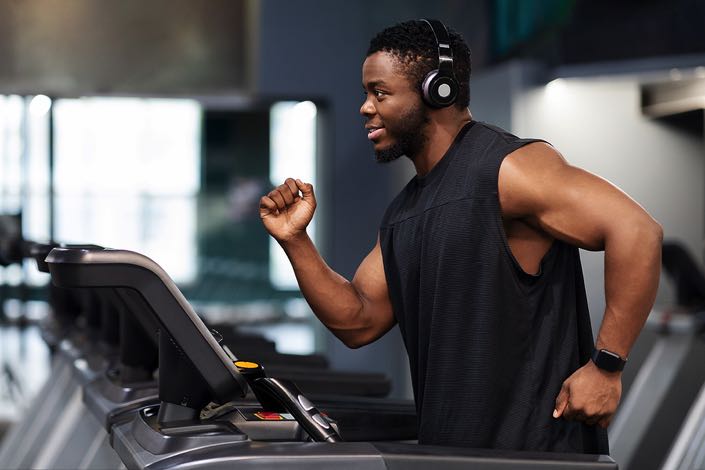
Another hugely important factor when weighing up which wireless headphones to opt for will come in the form of what, exactly, you’re planning to use them for. If you’re a commuter, for example, and you’re hoping to use your wireless headphones in order to listen to podcasts or music on the way to work, then it’s possible that you might be best off opting for in-ear buds. This is on account of the fact that they will offer decent sound quality, close off external noises and be incredibly easy to put in your pocket or bag when it’s time to get off the train.
On the other hand, those of you hoping to use your headphones in order to work on music in a recording studio then you’ll want to be opting for over-ear, closed back headphones. Most people will tell you that you shouldn’t be working with wireless headphones if the nature of the sound is really crucial, which it is likely to be if you’re working in a studio. In truth, though, the sound quality is so good nowadays that that isn’t necessarily the case any more. Even so, it’s worth thinking about in terms of which ones are right for you.
What you’re using them for will always help to dictate which style of headphone you go for. In the vast majority of cases, over-ear headphones are the most comfortable of the options. With that in mind, someone that will be using them on long journeys or when sat at home for hours on end would do well to opt for over-ear cans rather than on-ear ones. As you might imagine, in-ear headphones can quickly become uncomfortable, putting strain on your ears over time. On-ear headphones can, therefore, be considered something of a middle ground.
Apple AirPods Buying Guide
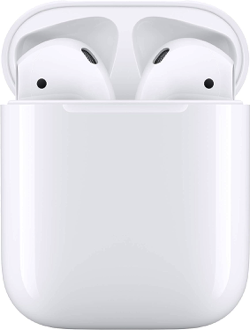 Apple hasn’t always offered headphones, being a relative newcomer to the market. Since it decided to launch some, however, the company has gone big in trying to perfect what it offers. The first AirPods launched in 2016 and since then you can get AirPods Max, AirPods Pro and three generations of the straight AirPods. It goes without saying that AirPods, irrespective of the model, are aimed squarely at Apple uses. They will work with Android devices, but a lot of the features won’t work as expected, which is worth bearing in mind before you buy them.
Apple hasn’t always offered headphones, being a relative newcomer to the market. Since it decided to launch some, however, the company has gone big in trying to perfect what it offers. The first AirPods launched in 2016 and since then you can get AirPods Max, AirPods Pro and three generations of the straight AirPods. It goes without saying that AirPods, irrespective of the model, are aimed squarely at Apple uses. They will work with Android devices, but a lot of the features won’t work as expected, which is worth bearing in mind before you buy them.
The AirPods 3 are the latest version of the basic headphones, although using the word ‘basic’ is a touch misleading. They promise spatial audio, allowing the sound that you’re listening to to be positioned around you in order to create a wider and more immersive sound when listening. The model also boasts Adaptive EQ, which adapts the sound in real-time based on how well or otherwise the earbuds actually fit into your ears. On top of that, there is improved technology for voice calls, with a new coded AAC-ELD that enhances speech, plus a mesh over the microphone that reduces wind noise.
The 2nd generation AirPods had battery life of up to 24 hours, which has been increased to 30 hours for the 3rd generation. The design brings them closer to the AirPods Pro, thanks to the shorter stems than previous generations. The sound that you’ll get is something of a neutral profile, with some extra bass at the bottom age. They are, of course, Bluetooth headphones and their waterproof rating is IPX4, so you’ll be ok if you’re caught in a shower or your sweat profusely but you won’t want to be wearing them if you go for a swim and want them to work afterwards.
The combination of the decent battery life, balanced sound and spatial audio support means that they will be more than good enough for what most people will want to use them for. On the downside, the lack of active noise cancelling means that you won’t get the sort of quality sound that you’ll be after if you’re looking to use them when you’re on a plane or in another noisy environment. That more than 200 million pairs of AirPods have been bought since the first generation was released, however, tells its own story, so it’s unsurprising that they’re still going strong.
AirPods Pro
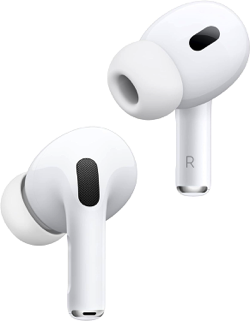 If you’re looking for something a little bit more upmarket than the standard AirPods then the AirPods Pro will be what you’re after. They are now in the second generation, with this version of the device being amongst the best in-ear headphones that you can but. The battery life is impressive, coming in at six hours on a single charge with the Active Noise-Cancelling system engaged. If you put them into the charging case to re-energise them then you’ll be able to get as much as 30 hours out of them, which will be more than enough for most people’s usage before recharging.
If you’re looking for something a little bit more upmarket than the standard AirPods then the AirPods Pro will be what you’re after. They are now in the second generation, with this version of the device being amongst the best in-ear headphones that you can but. The battery life is impressive, coming in at six hours on a single charge with the Active Noise-Cancelling system engaged. If you put them into the charging case to re-energise them then you’ll be able to get as much as 30 hours out of them, which will be more than enough for most people’s usage before recharging.
It is the Active Noise-Cancelling aspect of the headphones that really help to set them apart, with Apple claiming that they can block out twice as much noise as the older model. That is thanks to the new H2 chip as well as the repositioned acoustic vents and microphones. That chip also powers the Adaptive Transparency feature, which aims at reducing harsh or loud noises when you’ve engaged Transparency Mode, helping if you are in an environment where screams or screeches might be expected. Add that to the Spatial Audio and you can get really impressive sound from the headphones.
As with the AirPods, they will worth with Android devices but many of the features that help them to stand apart won’t work. If you’re particular keen to have them then you shouldn’t let that stop you, however, given the fact that the sound they produce is excellent. Each earbud boasts a new custom low-distortion, high-excursion audio driver as well as a transducer and high dynamic range amplifier. They combine with the H2 chip and the system’s advanced audio algorithms to produce top-level sound that will offer a rich and powerful sound regardless of what you’re listening to.
You can expect songs to flow well, with a sense of drive that ensures you’ll want to keep using them when you’re tuning in to music. The main downsides to the headphones, if you want to call it that, is that they don’t support high-res or higher-quality tracks, which is really weird when you consider the fact that Apple Music offers a high-resolution catalogue. Even so, these are on the list of some of the best in-ear headphones that you can get, whilst the charging case also offers plenty of features that make it better than the one for the original AirPods Pro.
AirPods Max
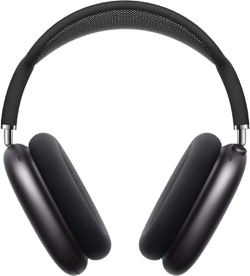 If we’re going to talk about AirPods then it’s only right that we talk about the AirPods Max, even though they probably shouldn’t be called that. AirPods, after all, is suggestive of small devices that fit inside your ear, whilst the AirPods Max over over-ear wireless headphones are more like the sort of thing that you’d imagine a DJ might wear. Whilst some audiophiles might scoff at the very notion of it, the reality is that the AirPods Max offer quality that can rival most things on the market. They are made of quality materials that might not look amazing but definitely sound it.
If we’re going to talk about AirPods then it’s only right that we talk about the AirPods Max, even though they probably shouldn’t be called that. AirPods, after all, is suggestive of small devices that fit inside your ear, whilst the AirPods Max over over-ear wireless headphones are more like the sort of thing that you’d imagine a DJ might wear. Whilst some audiophiles might scoff at the very notion of it, the reality is that the AirPods Max offer quality that can rival most things on the market. They are made of quality materials that might not look amazing but definitely sound it.
The headphones themselves are made up of single-piece anodised aluminium ear cups, which are connected together courtesy of a stainless-steel headband. It is memory foam cushions that keep your head nice and comfortable, creating a seal that is effective at keeping out sound form the outside world. Of course, premium materials don’t tend to be all that light, with the headphones coming in at 385 grams. That is heavier than most other premium over-ear headphones, which is worth bearing in mind if you have a weak neck or don’t like lifting up heavy things.
The majority of the headphones are button-free, but you can find two physical buttons on the top of the righthand cup. One of them switches between the Active Noise-Cancelling feature, whilst the other is a dial that is based on the digital crown that you’d find on an Apple Watch. That can be used to increase or decrease the volume, play or pause what you’re listening to or even skip tracks. It can be accidentally touched, but when it isn’t it works really well and intuitively. The headphones are set to automatically listen out for ‘Hey, Siri’, but if you want to turn that off you can hold the crown down to active it.
The headphones can be charged using a USB-C charger, which is the way that Apple is going with most of its devices these days. The company’s 20 watt model allows for fast-charging, with a five-minute charge providing an hour and a half of ANC listening. A full charge offers 20 hours of listening, which should be enough for most people and has been shown to be a conservative estimate from most tests. One thing to bear in in mind is that the headphones don’t allow a 3.5 millimetre cable to be connected to them, so if you want to use them on a plane or other you’ll have to buy an adapter.







